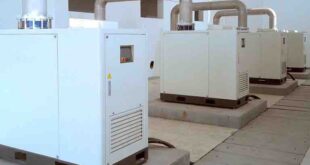Many living things, including cicadas, geckos and lotus plants have evolved water-repellant, waxy surfaces whereupon morning dew forms perfectly round droplets.
Now, scientists have revealed the precise mechanisms by which these droplets meet, jump and roll from insect wings and plant surfaces – taking tiny contaminants with them.
Similar methods could be used to improve the design and functionality of man-made, self-cleaning devices including coatings for solar panels, car windshields and biosensors, experts say.
A team of researchers from the University of Edinburgh’s School of Engineering observed how the self-cleaning mechanism works on cicadas’ wings.
Using computer simulations powered by the supercomputer ARCHER2, they found pollutants could be removed in two ways – depending on the forces of attraction at play between the water droplets, the contaminant, and the molecules on the surface of the insect’s wings.
The findings show that when the force of the water droplet is higher than the force pinning the contaminant to the surface, the pollutant is absorbed by the droplet which then rolls or jumps off the cicada’s wings.
In other cases, lifting forces generated by lots of droplets merging together will catapult contaminants off the wings, in a mesmerising droplet shape, resembling a hot air balloon.
Dr Sreehari Perumanath, who led this research while working at the University of Edinburgh’s School of Engineering and is now a Leverhulme Fellow at the University of Warwick, said: “We now have a better understanding of how surfaces can be passively decontaminated without using a power source. This work has a broad scope for future research and the development of new experiments for self-cleaning surfaces.”
Co-author, Dr Matthew Borg from the Institute for Multiscale Thermofluids at the University of Edinburgh’s School of Engineering, said: “This research reveals the critical parameters required for contaminants to be removed effectively from surfaces and opens up new avenues for exploiting precision assembly in future electronics and biosensors.”
The study, published in the journal Nano Letters, was supported by the Engineering and Physical Sciences Research Council.
 Engineer News Network The ultimate online news and information resource for today’s engineer
Engineer News Network The ultimate online news and information resource for today’s engineer



